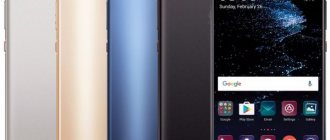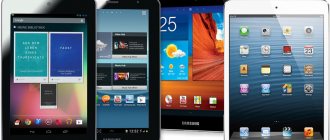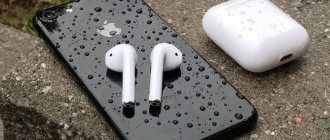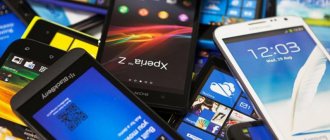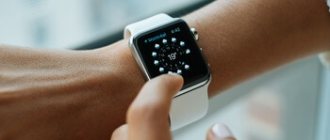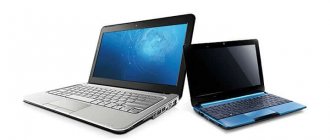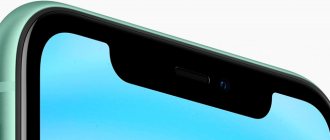The telephone and iPhone are two devices that provide communication and are extremely popular. The difference between a phone and an iPhone is primarily in their price categories. Owners of mobile phones know that their main function is to maintain communication and transmit information, this is enough for them and they do not understand at all why shell out astronomical sums for a “dialer”. In order to understand whether such a high cost is justified, it is worth considering the main characteristics of the two listed devices.
Peculiarity
The question of how a smartphone differs from an iPhone and Android is not correct. Let's figure it out.
A smartphone is a device equipped with additional functions of a pocket PC. In addition to calls, it allows you to watch videos, listen to music, and play games.
IPhone is a series of smartphones produced by Apple. Therefore, there will be no mistake in calling it a smartphone. It’s just that lately the iPhone has become a household name.
Android is an OS developed by Google. Created based on the Linux kernel.
Reliability
According to statistics, the percentage of defective Apple gadgets is minimal and does not exceed 4% of the total number. But the percentage of defects from other manufacturers is higher, where the leading position in producing defects is occupied by LG - 11.2%, Sony - 9.7%, Samsung - 4.7%. The main failures are: display failure, battery wear, video chip or camera failure, and Wi-Fi failure.
OS
The main difference between Apple products is the iOS OS. Only used on devices of this brand. Its main advantage:
- Stability. Installed on a small model range. This allows developers to constantly improve it. Allow to perfection. Even on an older iPhone model, the OS will work correctly;
- Safety. iOS is a closed OS. Therefore, it is virtually impossible for malicious code to enter the device;
- Updates. For example, iOS 11, released in 2021, will be installed on the iPhone 5S developed five years ago;
- Simplicity. To understand how the Apple OS works, the average user only needs five minutes. But there is also a drawback to this. No advanced customization options.
Mobile phone
A mobile phone is a portable device through which voice messages are transmitted. Of course, the phone has other additional functions, such as a telephone directory, call log, clock, alarm clock, calendar and others. There are also options for sending SMS and MMS messages. Modern mobile phones are equipped with cameras that can take photos and videos. These are useful functions, but still, on a mobile phone their list is limited to a narrow range, unlike an iPhone. There is also an advantage: the phone is less susceptible to external damage.
- We recommend: How to choose a mobile phone
Communication between devices
iPhone, iPad, Mac, smart watches from this manufacturer can be linked with each other. Create an ecosystem. How it works? For example, once you start writing text on your iPhone, you can continue on your PC. Communication occurs through your Apple ID account.
On Android, this is available by installing additional applications. Contact via Google account. There is no need to install additional software for Apple products.
Smartphone
A smartphone is a device that is one step above the conventional mobile devices that we have all been familiar with for so long. The appearance of gadgets of this kind is associated with progress, so in terms of its characteristics it is between a mobile phone and a computer. But since an operating system is installed on a smartphone, it is much closer to a computer than to its predecessor.
Due to the fact that there are a huge number of counterfeit mobile phones on the market that look like smartphones, identifying a gadget as a representative of a specific family based purely on design is a rather difficult undertaking. It’s another thing to pick up the device and look at it in action.
Instead of output
What's better: iPhone or smartphone? The difference between these groups is insignificant. How is an iPhone different from a regular smartphone? When purchasing an iPhone, you will not have the opportunity to change anything radically. No file system access, but user friendly interface. There is a guarantee of safety, reliability and stability from the manufacturer.
When buying a phone, an ordinary user is guided by the following indicators: access to the Internet, access to news. Therefore, a smartphone running Android OS is preferable due to its low cost compared to Apple products.
If your budget allows and you believe that every successful person should have a new iPhone, then the choice is obvious.
For the average user who needs a balance between cost and performance, it would be preferable to opt for a smartphone.
Smartphones and iPhones - what's the difference?
iPhones are distinguished by their high cost. Even if another smartphone is as close as possible to an iPhone in its capabilities, the cost of the latter will be higher. The iOS operating system is typical only for iPhones; smartphones are equipped with different systems. If we talk about why the iPhone is better than other phones, then unlike others, they are always made of the highest quality materials and assembled perfectly.
As you might guess, the telephone, smartphone and iPhone are types of devices with a similar focus. The phone's list of features is significantly inferior to a smartphone and an iPhone.
Smartphones have a fairly large set of functions and are equipped with operating systems, which allows them to perform a huge number of manipulations. The advantage of the iPhone is the high quality of the materials from which it is made, as well as excellent assembly, a significant amount of built-in memory, an easy-to-use operating system and an apple logo.
Difference between iOS and Android. Openness of Android OS and closedness of iPhone OS
Perhaps the most important factor differentiating the platforms. Android smartphones are a universal open system, adapted for devices with a wide variety of hardware, which can simply be hacked, copied and reinstalled. Applications for operating systems are installation packages that can be easily moved. The system itself can be “tailored” at will. Due to the availability of the system to other developers, other platforms based on Google's development have appeared on the market.
iPhones are based on a closed-source system, which means that the unique characteristics of smartphones are fully protected by Apple patents. The system cannot be downloaded, it is almost impossible to hack and adapt. Therefore, this operating system has increased stability, updates are released for almost identical smartphones with very similar hardware, and is supported only by Apple products: iPhone, iPad, iPod Touch, AppleTV.
Cost and performance of devices
Phones are assembled according to the PC principle - all functional elements are selected taking into account the calculated cost of the finished smartphone, and components can be produced by a wide variety of companies. This state of affairs has led to the fact that the price range for devices has increased greatly. At the same time, Android smartphones are available in various price categories, from indecently high prices to budget ones with the lowest possible cost.
Apple smartphones are much more expensive, which is the policy of this organization. At the same time, the devices undergo a rigorous process of testing gadgets before going on sale, and their internal characteristics are strictly defined, where most of them do not change even when the version of the device is upgraded. Thus, the system architecture makes the most efficient use of all its resources.
About apps
The randomness and mass production of all kinds of applications results in the vulnerability of most programs. Today there is an opinion that Android is a less secure operating system due to the large volume of programs that are practically not controlled by anyone. Apple is taking greater care in selecting publicly available apps. However, hacking any popular OS sooner or later becomes a desired target for skilled hackers. But, if you follow simple rules and download applications only from official Apple and Google resources, then the possibility of installing a damaged application is reduced to a minimum.
As for access to applications, both platforms have their own stores: Android - Google Play, iPhone - App Store, offering their consumers various programs (paid, free), which are grouped based on categories, ratings, reviews. Operating systems show parity with respect to the availability of programs that are extremely popular among users - Twitter, Flickr, Angry Birds. A nice advantage of Android is native Google services (for example, YouTube and Google Docs) and mega-popular services that are available only through this operating system - DropBox, Adobe Flash Player, BitTorrent. As for the iPhone, a large number of Apple exclusives have been ported to Android over time (for example, Instagram).
Device functionality
Both Android smartphones and iPhone smartphones equally provide their consumers with the ability to make calls, communicate via video chat, use the Internet, freely use maps, as well as the ability to voice control smartphones.
An important difference between the platforms is the ecosystem to which the end consumer is tied. For Android, these are services from Google and other large-scale systems, while iPhone has several cloud services and most often calls for contact exclusively with devices of their own brand, creating intuitive synchronization between them.
An equally important difference between platforms is security. Thus, Android isolates the application context from the entire system in general and separately. Thus, a third-party program will not be able to do anything dangerous until the owner of the smartphone independently allows it to do so (paid calls, sending SMS, etc.). The iPhone is fully trusted by the developer, but exercises control at the time of publication.
Ease of use for Android and iPhone
As for the graphical interface of the iPhone, it is thought out very well - Apple specialists spent a lot of time and effort on improving it. Apple devices offer a convenient, comfortable and intuitive interface, however, Android gadgets are also very easy to use and do not cause difficulties. We can say that the described operating systems have different, but equally clear menus. Android smartphones are more suitable for users who like to customize their device independently, solely at their own discretion, by changing the design.
Battery life
Regarding this issue, there are a huge number of Android smartphones with very different battery sizes, and if you compare iPhone and Android models of different years of release in terms of battery life, each case will be individual. Also, the comparison is not entirely correct because some Android smartphones have fairly large, energy-intensive displays or a set of serious characteristics that consume a large amount of energy. Thus, it is more correct to compare a specific product with another specific product, taking into account battery capacity and functionality. One thing is certain: smartphone manufacturers are constantly working to increase the battery life of a mobile phone on a single charge cycle. Highscreen line of devices, are becoming increasingly popular
.
Display
At the moment, there are two main technologies for creating displays - OLED and IPS. There are also TFT matrices that are still installed in ultra-budget models.
Most often, both iPhone and Android smartphones use IPS. iPhones with AMOLED (OLED) are XS, X and Max; there are more and more devices on Android with such matrices, but the main representatives of this trend are Samsung. As a rule, AMOLED screens are installed in smartphones of the highest price segment and sometimes the middle one. In other cases, they resort to IPS. The reason is simple - they are cheaper, and their picture is not always much worse.
However, if possible, it is better to buy a phone with AMOLED (regardless of Android or iPhone), and there are at least a few reasons for this:
- Saves battery energy better, which is achieved by backlighting each pixel individually (instead of using one backlight for the entire screen as in IPS).
- Has wider viewing angles. More expensive IPS displays, like those used in the iPhone, have almost the same viewing angles, but upon closer inspection, the differences are still noticeable.
- Reflects less glare from the sun. This can be especially helpful for those who spend most of their time outdoors.
However, many Android smartphone manufacturers prefer to use IPS panels due to their greater availability. But do not forget that the IPS in an expensive smartphone and a cheap one will still differ in picture quality.
Accessories
The variety of accessories for iPhones is simply amazing. This is easy to explain. Firstly, Apple has a narrow product range, so making accessories is easy. Secondly, iPhone users are usually wealthy people, so making accessories is profitable.
If we talk about phones from other manufacturers, there are so many of them that it is difficult to find a bumper, protective film or glass for some models. The exception is the popular models of the same Samsung, for which many accessories are sold. It’s easy to buy headphones for Android smartphones, since most models have a standard 3.5 mm jack or an adapter for this jack.
Thus, the primacy of the iPhone in this matter is obvious.
Price
The cost of Android smartphones depends on the quality of the installed display, processor power, amount of memory and the absence/presence of certain modules. An ultra-budget smartphone may be sold with an outdated processor, a low-quality TN matrix and a couple of gigabytes of RAM. This is unlikely to be enough to get a full and positive experience using such a device.
However, even if you compare iPhone and Android smartphones of approximately the same performance, the former will still be more expensive. Does it make sense to overpay? Everyone decides for themselves. Individual users can afford to replace their iPhone every year. Some people buy one iPhone and use it for several years until official support ends. Others, for the same amount, can buy two Android smartphones and use them for about the same period of time.
Criticism
Every year, the release of a new iPhone is a real event in the mobile environment, to which the eyes of millions of users are riveted. No gadget in the world is subject to so many high demands and expectations. Only it is examined almost under a microscope, praised or criticized to the nines.
Many people accuse Apple of the unreasonably high cost of its devices. However, the price tags of competitors are only slightly inferior to apple flagships. Yes, you have to pay for excellent product quality, long-term after-sales service and a big name.
You shouldn’t criticize iPhones for the closed system, because it is the “main feature” of the gadget. Thanks to this, the high performance indicators produced by iPhones during comparative testing are achieved.
If you are an advanced user and want to customize your smartphone at your own discretion (and most importantly, you know how to do it), then perhaps this phone is simply not for you. In fact, the dominant part of users do not want to spend time learning all the settings. They just want to turn on their smartphone and start using it, downloading the necessary content from a verified, safe source - and Apple offers them this.
Performance
The performance of the device largely depends on the hardware. However, optimization of the operating system plays an important role. Until recently, the iPhone ran on proprietary Apple processors with 4 and 6 cores. And only recently the branded Apple A13 Bionic with eight cores appeared. The same trend is observed with the number of gigabytes of RAM. The iPhone 11 Pro Max, for example, has only 4 GB in any version, and this is quite enough. How does Apple do this? As mentioned above, iOS optimization is important, including choosing the priority for running processes at the system level.
Android flagships have long been powered by powerful processors with 8 cores and a maximum operating frequency of 3 GHz. RAM can exceed 12 GB. We do not consider smartphones with one and two gigabytes, since they have long been considered obsolete and will not be able to cope with the tasks assigned to them.
If you compare a flagship Android device with the iPhone 11 Pro Max, the performance of the system, programs and games will be approximately at the same level, but if you are interested in the results of synthetic tests, then here devices with Android are always in the lead. Of course, from time to time, under certain circumstances, both operating systems can freeze.
Design and ergonomics
For a long time, iPhones were produced in a standard case, so it was hardly possible to somehow stand out from the crowd. With the release of the iPhone X, the situation has changed dramatically. iPhone models have become more recognizable. The camera module first received two sensors (iPhone X, iPhone SE), and then three (iPhone 11 Pro). Younger models have a smaller screen for lovers of compact mobile phones. The older ones (Pro, Pro Max) received larger displays, which is interesting, we think, for a larger number of users.
Android smartphones are produced by different manufacturers and come in different shapes, colors and sizes. This means that it will be easier for the user to find exactly what he really needs. Form factor, screen size, aspect ratio, camera module - there are many devices that are strikingly different from each other.
iPhone
An iPhone is a type of smartphone that is produced only by Apple. It also has an operating system, if in the case of ordinary smartphones it is Android, then here it is iOS
In terms of popularity, gadgets of this family are significantly ahead of all their competitors. However, in technical terms they are approximately equal. An integral attribute of each new generation of iPhones is the corporate logo of a bitten apple, as well as the absence of a slot for a flash drive and a non-removable battery.
Interface
The first thing a user sees when he begins to get acquainted with a mobile device is its interface. We can talk about this for a long time, but let’s try to focus on the main thing.
Decor
The interface of all iPhones updated to the latest version of iOS is virtually no different. Therefore, if you do not want to study in detail a large number of settings and are used to treating your phone as a working tool, then the iPhone is suitable for you. New features are added infrequently. Plus, if you have to upgrade your iPhone to a newer model, you're unlikely to have to get used to anything new in design.
However, even the most conservative users can find the lack of variety (where appropriate) annoying. In this regard, Android has much more to offer, including the ability to change the skin or completely customize the interface to suit your needs.
Smooth interface
On the iPhone, opening applications, transitioning animations between windows, and launching the main menu are very smooth. The developers tried to make using the phone as comfortable as possible. iOS is designed in such a way that the priority of loading menu items and animated transitions is always higher than the actions that the gadget performs in the background.
This is not always good, since not only secondary processes, but also all background processes slow down. For example, copying files or uploading data to the cloud may take longer than you expect.
An Android device has no problems with this - several dozen applications can be launched at once and run in parallel. However, it all comes down to performance. If applications do not have enough RAM or processor power, the system will not work stably. Fortunately, modern flagships actually have no problems with this.
Supports two SIM cards and memory cards
Since iPhones do not support memory expansion, their owners are constantly faced with memory shortages. Of course, today you can buy models with 128 GB or 256 GB of internal memory, but they are not cheap.
In addition, eSIM is not supported everywhere, and the need for a second SIM card may arise at any time. For example, there are those who use one card as their main card and the other for work. This is convenient because it eliminates the need to have a second phone. Agree, it’s not very convenient to constantly carry two gadgets with you at once.
In Android, there are no problems either with memory expansion or with an additional slot for a second SIM, which cannot be said about Apple devices.
Cameras
The cameras of iPhone and Android smartphones take pictures quite well (especially considering the small size of the optics used in smartphones today). However, the approach to shooting on an iPhone was very different until recently. Thus, pictures taken using such lenses came out in what is called a pure form and without any effects.
Android smartphone developers, on the contrary, have always strived to improve the quality of photographs. For this, all kinds of intelligent algorithms are used that process images during the shooting process. In some cases, the scene or object may appear oversaturated. But let's think about what a smartphone owner really needs? Typically, the resulting photos are immediately shared on social networks, such as Facebook or Instagram. And, you see, it’s very convenient if the necessary effects are applied automatically.
Apparently Apple followed the same path in its latest iPhones. Now the photos are not raw, but modified using special algorithms. And iOS developers continue to work on improving them. For example, the latest iPhone added the ability to take photos in low light conditions. And those who want to process the scene manually will still use professional cameras for this.
Video iPhone or Android main differences
Conclusion: - I explained to you how Android differs from iPhone in simple words. They are very similar in some ways, but at the same time there is a significant difference between them, their own nuances. The main thing is that each of them has found its consumer. What is better to buy, iPhone or Android, is a personal matter for each buyer. Good luck!
PS Let me remind you that if you decide to repair computers yourself and make great money at the same time, then it is advisable for you to fill out the form below or follow the link ====>
Sincerely, Andrey Zimin 09/30/2019
